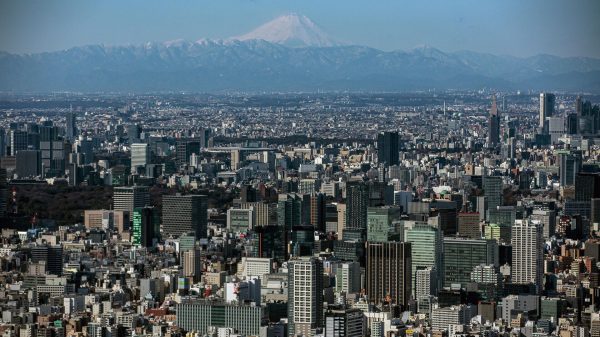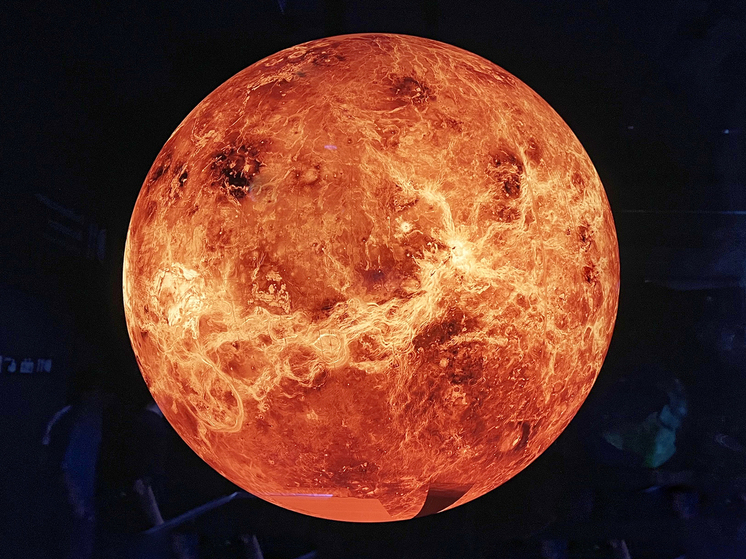What secrets does Venus' atmosphere hide?
Four years ago, the unexpected discovery of a gas in the clouds of Venus that on Earth indicates life — phosphine — sparked controversy, prompting criticism that subsequent observations were inconsistent with the findings. Now the same team behind the discovery has returned with new observations, first presented in mid-July at a meeting of the Royal Astronomical Society in Hull, England. Ultimately, they will form the basis of one or more scientific studies, and this work has already begun.

The findings, the researchers say, provide even stronger evidence that phosphine is present in the clouds of Venus, our nearest neighbor. The planet, sometimes called Earth's evil twin, is similar in size to our own, but has surface temperatures that can melt lead and clouds made of corrosive sulfuric acid, CNN reports.
The work was helped by a new receiver mounted on one of the instruments used to make the observations, the James Clerk Maxwell Telescope in Hawaii, giving the team more confidence in their findings.
«There's also a lot more data,» says Dave Clements, a lecturer in astrophysics at Imperial College London.
“We've done three observing campaigns, and in just one of them we got 140 times more data than the original detection,” he said. “And what we have so far indicates that we've detected phosphine again.”
A separate team, which also includes Clements, has presented evidence for another gas, ammonia.
“This is probably more important than the discovery of phosphine,” he added. “We're a long way from being able to say for sure, but if there is life on Venus that produces phosphine, we have no idea why it's producing it. However, if there is life on Venus that produces ammonia, we have an idea why it might want to breathe ammonia.”
However, rocky planets like Earth, Venus, and Mars have atmospheres in which oxygen dominates the chemical composition because they did not have enough mass to retain the hydrogen they had when they initially formed, and that hydrogen escaped.
So finding these gases on Venus came as a surprise. “By all normal expectations, they should not be there,” Clements comments. – Phosphine and ammonia have been proposed as biomarkers, including on exoplanets. So finding them in the atmosphere of Venus is interesting from that perspective as well. When we published the phosphine results in 2020, it was understandably a surprise.”
Subsequent studies have contradicted the findings, suggesting that the phosphine was actually ordinary sulfur dioxide. Data from instruments other than those used by Clements' team, such as the Venus Express spacecraft, NASA's Infrared Telescope Facility, and the now-defunct SOFIA airborne observatory, have also failed to confirm the phosphine findings.
But Clements said his new data, from the Atacama Large Millimeter/submillimeter Array, or ALMA, rule out the possibility that sulfur dioxide could be the contaminant and that the absence of phosphine in other observations is due to timing. «It turns out that all of our observations where phosphine was detected were made when Venus was transitioning from night to day,» he said, «and all of the observations where phosphine was not detected were made when the atmosphere was transitioning from day to night.»During the day, ultraviolet light from the sun can break apart molecules in Venus's upper atmosphere. «All the phosphine gets baked, and that's why you don't see it,» Clements said, adding that the only exception was the Stratospheric Observatory for Infrared Astronomy, which made observations at night. But further analysis of that data by Clements' team found faint traces of the molecule, confirming the theory.
Clements also pointed to unrelated research by a team led by Rakesh Mogul, a professor of chemistry and biochemistry at California State Polytechnic University, Pomona. Mogul reanalyzed old data from NASA's massive Pioneer Venus probe, which entered the planet's atmosphere in 1978.
“This showed phosphine in the clouds of Venus at levels of about one part per million, which is basically what we were detecting,” Clements said. “So it’s all starting to fit together, but we still don’t know what’s producing it.”
Using data from the large Pioneer Venus probe, a team led by Mogul published “compelling evidence for phosphine deep in the cloud layer of Venus” in 2021, Mogul said.
“To date, our results remain uncontested in the literature,” said Mogul, who was not involved in the Clements team's research. –This is in stark contrast to the telescope data, which remains controversial.”
The presence of ammonia on Venus would make for an even more surprising discovery. The results, presented at the Hull conference by Jane Greaves, a professor of astronomy at Cardiff University in the UK, will form the basis of a separate scientific paper using data from the Green Bank Telescope in West Virginia.
The clouds of Venus are made up of droplets, Clements said, but they are not droplets of water. They contain water, but they also contain so much sulfur dioxide dissolved in them that they become extremely concentrated sulfuric acid, a highly corrosive substance that could be deadly to humans if exposed to high levels. “It's so concentrated that, as far as we know, it would be incompatible with any life we know of on Earth, including extremophile bacteria, which like very acidic environments,” he said, referring to organisms that can survive in extreme environments.
However, the ammonia inside the acid droplets could act as a buffer to reduce the acidity, bringing it down to levels low enough for some known Earth bacteria to survive, Clements added.
«The most interesting thing is that there is some kind of microbial life producing ammonia behind it, because that would be a great way for it to regulate its environment,» Jane Greaves said in a talk to the Royal Astronomical Society. «It would make its environment much less acidic and much more survivable, to the point that it is as acidic as some of the most extreme places on Earth, so not completely crazy.»In other words, ammonia's role is easier to explain than phosphine's. «We understand why ammonia might be useful to life,» Clements said. «We don't understand how ammonia is formed, just like we don't understand how phosphine is formed, but if ammonia is there, it must have a functional purpose that we can understand.»
But Jane Greaves cautions that even the presence of phosphine and ammonia would not be evidence of microbial life on Venus because so much information about the planet's state is missing. «There are so many other processes that could be going on, and we just don't have any hard information to say whether this process is possible or not,» she said, citing the hard evidence that can only come from direct observations from the planet's atmosphere.
One way to make such observations would be to persuade the European Space Agency to fly some instruments on board the Jupiter Icy Moons Explorer, a probe headed to the Jupiter system, when it flies by Venus next year. But even better data could come from the DAVINCI atmospheric orbiter, which NASA plans to launch to Venus in the early 2030s.
From a scientific perspective, the new phosphine and ammonia data are intriguing but cause for cautious optimism, said Javier Martin-Torres, a professor of planetary science at the University of Aberdeen in the United Kingdom. He led a study published in 2021 that cast doubt on the phosphine findings and postulated that life in Venus’s clouds is impossible.
“Our paper highlighted the harsh and seemingly inhospitable conditions in the Venusian atmosphere,” Martin-Torres wrote in an email. “The discovery of ammonia, which can neutralize sulfuric acid clouds, and phosphine, a potential biosignature, challenges our understanding and suggests that more complex chemistry may be at work here. It is imperative that we approach these discoveries with rigorous scientific investigation.”
The findings open up new avenues for research, he added, but it's important to take them with a healthy dose of skepticism. While the discovery of phosphine and ammonia in Venus's clouds is exciting, it's just the beginning of a longer journey to unraveling the mysteries of the planet's atmosphere, he said.
Scientists' current understanding of the chemistry of Venus' atmosphere cannot explain the presence of phosphine, said Dr Kate Pattle, a lecturer in physics and astronomy at University College London. “It is important to note that the team that measured phosphine does not claim to have discovered life on Venus,” Pattle wrote in an email. “If phosphine is indeed present on Venus, it could indicate the existence of life or a chemical composition of the Venusian atmosphere that we do not yet understand.”
Pattle added that the discovery of ammonia would be exciting if it were confirmed, because ammonia and sulfuric acid could not coexist without some process — be it volcanic, biological or something else not yet considered — stimulating the production of ammonia itself.
She emphasized Both of these results are only preliminary and require independent confirmation, but they make upcoming missions to Venus intriguing.
”These missions may provide answers to questions raised by recent observations, Pattle said, and, will certainly allow us to take a fresh look at the atmosphere of our closest neighbor and its ability to nourish life.

























































Свежие комментарии